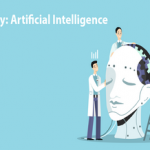Some Mobile Device Input Methods
Swipe/Swype:
An action taken on a device’s screen that involves translational movement of touch points. A swipe recognizer makes an instantaneous decision as to whether the user’s touches moved linearly in the required direction.
Apple:
“Touch type tell”
Google/Android:
“Type, Write or Speak”
Gesture:
Multi-touch gestures are predefined motions used to interact with multi-touch devices. An increasing number of products like smartphones, tablets, laptops or desktop computers features functions that are triggered by multi-touch gestures. Some typical gesture-function-pairs are: tap, double tap, long press, scroll, pan, flick, pinch and rotate.
QWERTY:
The standard keyboard layout.
Sensors
Ambient light sensor:
An ambient light sensor basically adjusts the display brightness which in turn saves battery power in Smartphone; it saves power by adjusting the brightness of the display based on how much ambient light is present.
Accelerometer:
The accelerometer allows the device of Smartphone to detect the orientation of the device and adapts the content to suit the new orientation.
Gyroscope:
Gyroscopes are used in Smartphones and tablet PCs for finding the position and orientation of devices. Combining a gyroscope with an accelerometer allows the device to sense motion on six axes – left, right, up, down, forward and backward, as well as roll, pitch and yaw rotations – allowing for more accurate motion sensing abilities.
Proximity sensor:
The proximity sensor in Smartphone senses how close the phone is to the user’s cheek/face, so that it can pause whatever activity it is in the middle of (playing music or browsing the web, for example) so the user can take a phone call. When the phone is removed from the ear after the call, the phone resumes its previous activity.
Magnetometer:
A magnetometer is used to measure the strength and/or direction of the magnetic field in the vicinity of the device. Sometimes certain devices or radio signals can interfere with the magnetometer requiring users to either move away from the interference or re-calibrate by moving the device in a figure 8 motion.
NFC:
NFC a.k.a Near Field Communication, is a short-range wireless technology used as a method of transferring data over short distances between two compatible devices.
Sources: Wikipedia, techopedia, mobileburn, knowyourmobile, mobiledeviceinsight



















